#warming oceans
Text
California has gotten its first tropical storm watch ever. The last time a tropical storm hit California was in September of 1939 just after Hitler had started World War II. They didn't issue such watches in those days.
Major Hurricane Hilary in the Pacific is way stronger than low energy Hurricane Don in the Atlantic a few weeks ago; the latter spent only a few hours as a hurricane as it spun around aimlessly away from land.
Hilary will weaken from the current Category 4, but how much it will weaken is still not certain. If it maintains sustained winds of at least 74 MPH/119 KMH when it reaches California, then it will become California's first ever official hurricane.
Hurricane Hilary is expected to hit Southern California as a tropical storm, with a punch that could include flash flooding and significant amounts of rain, according to the National Hurricane Center.
A tropical storm watch for much of Southern California was issued Friday morning. The National Weather Service's San Diego outpost said this was the first time such an advisory had ever been issued for the region.
As somebody who's been through half a dozen tropical cyclones on the East Coast, I would advise our California friends that rain is a bigger hazard than wind – in most cases. People in areas which have the potential for flooding should particularly remain on alert.
The 1939 storm, called El Cordonazo, became the first and only tropical storm to make landfall in the state in the 20th century, according to the National Weather Service. NWS says the storm, which was at one point a hurricane, originated off the southern coast of Central America before moving north and eventually coming ashore at San Pedro, California.
Resulting floods from the storm killed at least 45 people across the Southern California region and caused $2 million in damage to structures and crops, the weather service reports. Another 48 people were also killed at sea.
There were far fewer people in California in 1939 when El Cordonazo caused deadly flooding.
Here is the current forecast for rainfall potential.

Keep up with the track of Hurricane Hilary here. Southern California should begin to feel the effects of Hilary on Sunday afternoon. Monitor local emergency information and follow advisories.
And if you're wondering why this is happening...
Our oceans are the warmest in recorded history. This is why it's so concerning
#hurricane hilary#california#potential flooding#california's first tropical storm since 1939#climate change#warming oceans#climate disasters
699 notes
·
View notes
Text
Corals are bleaching in every corner of the ocean, threatening its web of life. (Washington Post)
First around Fiji, then the Florida Keys, then Australia’s Great Barrier Reef, and now in the Indian Ocean. In the past year, anomalous ocean temperatures have left a trail of devastation for the world’s corals, bleaching entire reefs and threatening widespread coral mortality — and now, scientists with the National Oceanic and Atmospheric Administration and International Coral Reef Initiative say the world is experiencing its fourth global bleaching event, the second in the last decade.
At least 53 countries and local regions have experienced mass bleaching across the Atlantic, Pacific and Indian oceans. Bleaching — which occurs when stressed coral turn white after expelling symbiotic algae that provide food and color — must be confirmed within each ocean basin to be declared a global bleaching event.
Derek Manzello, an ecologist and head of NOAA’s Coral Reef Watch program, said the frequency and severity of bleaching events has increased since the early 1980s. That intensity and regularity has also ramped up in the last two decades.
“Now we’re just reaching a point in this warming cycle where these events are becoming so extreme and they’re just getting worse and worse and worse,” Manzello said.
According to the Global Bleaching Event Index, which is based on sea surface temperatures data, more than 54 percent of all the reef areas on the planet have experienced bleaching-level heat stress in the past 365 days. And that number is increasing by 1 percent each week, Manzello said. For context, during the worst global coral bleaching event on record between 2014 and 2017, the Global Bleaching Event Index peaked at 56 percent.
“Right now, we’re almost equal with the worst global bleaching event on record in terms of spatial extent,” Manzello said. It’s possible the overall percentage of reefs experiencing heat stress will surpass the previous record in the next few weeks.
“This should be a global wake-up call. The fact that corals are bleaching in each ocean basin essentially simultaneously,” Manzello said. “And more than half the reefs on the planet have basically experienced bleaching-level heat stress in the last year.”
5 notes
·
View notes
Text
Billions of Alaska snow crabs likely vanished due to warm ocean, study says | Marine life | The Guardian
7 notes
·
View notes
Text
'Alarming drop off the cliff': Record low Antarctic sea ice triggers eme...
youtube
#climate change#climate crisis#climate#climate emergency#climate action#new zealand#nz#world news#politics#aotearoa#antarctica#sea ice#global warming#sea level rise#warming oceans#climate catastrophe#environment#Youtube
7 notes
·
View notes
Text

"as the sun sets,"
instagram | shop | commission info
#artists on tumblr#animated illustration#backgrounds#digital art#2d animation#myillust#background art#environment illustration#animated gif#sunset#cozy rooms#evening#ocean waves#reading nook#helloo! just wanted to share this quick little artwork i made! c: this was originally just a warm-up painting of the clouds#but i ended up liking the end result a looot so i added the window reading nook idea around it to really frame the clouds!#this really is a quick one heh so there's not much else to say - i really hope you'll like this!#and i hope you'll have a lovely day/night ahead!
5K notes
·
View notes
Text
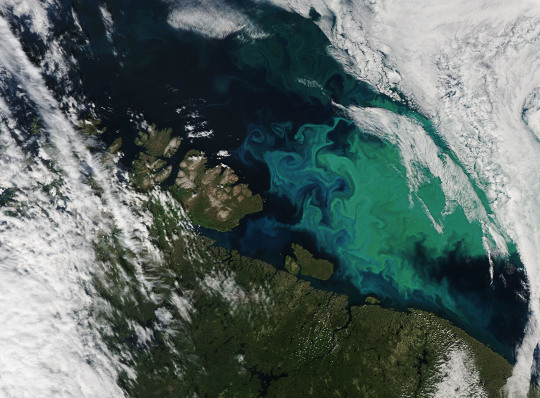
Sharpening Our View of Climate Change with the Plankton, Aerosol, Cloud, ocean Ecosystem Satellite
As our planet warms, Earth’s ocean and atmosphere are changing.
Climate change has a lot of impact on the ocean, from sea level rise to marine heat waves to a loss of biodiversity. Meanwhile, greenhouse gases like carbon dioxide continue to warm our atmosphere.
NASA’s upcoming satellite, PACE, is soon to be on the case!
Set to launch on Feb. 6, 2024, the Plankton, Aerosol, Cloud, ocean Ecosystem (PACE) mission will help us better understand the complex systems driving the global changes that come with a warming climate.

Earth’s ocean is becoming greener due to climate change. PACE will see the ocean in more hues than ever before.
While a single phytoplankton typically can’t be seen with the naked eye, communities of trillions of phytoplankton, called blooms, can be seen from space. Blooms often take on a greenish tinge due to the pigments that phytoplankton (similar to plants on land) use to make energy through photosynthesis.
In a 2023 study, scientists found that portions of the ocean had turned greener because there were more chlorophyll-carrying phytoplankton. PACE has a hyperspectral sensor, the Ocean Color Instrument (OCI), that will be able to discern subtle shifts in hue. This will allow scientists to monitor changes in phytoplankton communities and ocean health overall due to climate change.

Phytoplankton play a key role in helping the ocean absorb carbon from the atmosphere. PACE will identify different phytoplankton species from space.
With PACE, scientists will be able to tell what phytoplankton communities are present – from space! Before, this could only be done by analyzing a sample of seawater.
Telling “who’s who” in a phytoplankton bloom is key because different phytoplankton play vastly different roles in aquatic ecosystems. They can fuel the food chain and draw down carbon dioxide from the atmosphere to photosynthesize. Some phytoplankton populations capture carbon as they die and sink to the deep ocean; others release the gas back into the atmosphere as they decay near the surface.
Studying these teeny tiny critters from space will help scientists learn how and where phytoplankton are affected by climate change, and how changes in these communities may affect other creatures and ocean ecosystems.
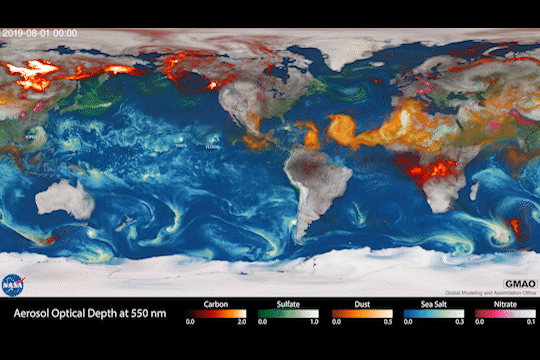
Climate models are one of our most powerful tools to understand how Earth is changing. PACE data will improve the data these models rely on.
The PACE mission will offer important insights on airborne particles of sea salt, smoke, human-made pollutants, and dust – collectively called aerosols – by observing how they interact with light.
With two instruments called polarimeters, SPEXone and HARP2, PACE will allow scientists to measure the size, composition, and abundance of these microscopic particles in our atmosphere. This information is crucial to figuring out how climate and air quality are changing.
PACE data will help scientists answer key climate questions, like how aerosols affect cloud formation or how ice clouds and liquid clouds differ.
It will also enable scientists to examine one of the trickiest components of climate change to model: how clouds and aerosols interact. Once PACE is operational, scientists can replace the estimates currently used to fill data gaps in climate models with measurements from the new satellite.

With a view of the whole planet every two days, PACE will track both microscopic organisms in the ocean and microscopic particles in the atmosphere. PACE’s unique view will help us learn more about the ways climate change is impacting our planet’s ocean and atmosphere.
Stay up to date on the NASA PACE blog, and make sure to follow us on Tumblr for your regular dose of sPACE!
1K notes
·
View notes
Text




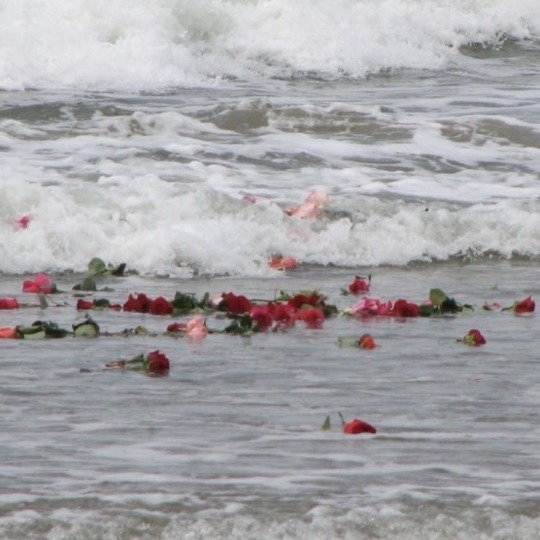




#a little bit of everything. warm water. flowers#ice. flowers on ice#fish. beauty <3#cottagecore#nature#naturecore#flowers#flowercore#water#watercore#moodboard#fish#ocean#sea#messy moodboard
3K notes
·
View notes
Text






𝑻𝒉𝒊𝒔 𝒊𝒔 𝒕𝒉𝒆 𝒍𝒊𝒇𝒆 𝑰 𝒄𝒓𝒂𝒗𝒆 ☕️
#chaotic academia#academia#dark academia#classic academia#literature#aesthetic#college#english literature#paris france#paris#parislife#parisian vibe#dreaming#dream#dream life#life#lifestyle#warm#calm#beautiful#tranquility#love#romantic#europe#coffee#baguette#ocean#sea#romantic academia#countryside
1K notes
·
View notes
Text


Whenever Stanley closes his eyes, he can feel the older man's aura surrounding him. [Blank Scripts AU]
#im literally about to pass out#i made this while im about to fall asleep#im not very coherent#my apologies if the description or the meaning of the image doesnt translate very well#i was originally planning on doing more panels but i got tired and shortened it#damn it#but basically this is just The Narrator (Black) emitting his energy out (aura)#it feels really cold#like an ocean of ice#that black mass is NOT the narrator's (Black's) true form#that black mass is like a physical manifestation of what the Narrator's (Black's) aura looks like#(in Stanley's imagination at least)#but Stanley is too much of a simp to care about all that#hug wife... wife very cold but thats okay. hug wife#maybe hug will warm wife up#tsp blank scripts au#tsp au#the stanley parable#the stanley parable ultra deluxe#tsp#tspud#tsp narrator#narrator tsp#stanley tsp#tsp stanley#stanley x narrator#narrator x stanley#stanarator#stannarator#stanarrator
400 notes
·
View notes
Text
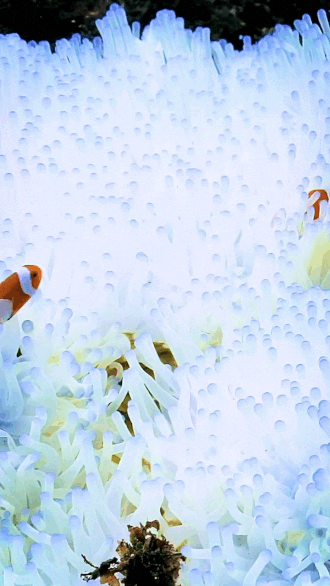
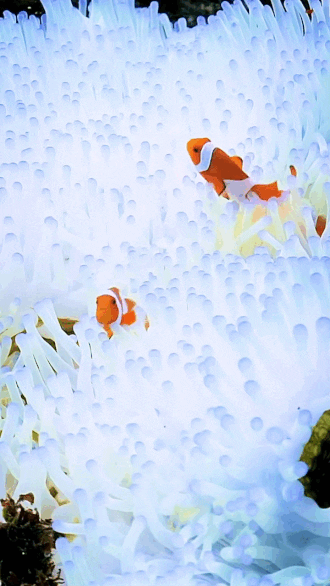
clownfish swimming through bleached anemones | jonoallenphotography on ig
if you have a moment and are mentally able, please read the text accompanying the original instagram post, located at the source link above, and this short article by The National Oceanic and Atmospheric Administration. if not, please just share it around.
it's true this video is strikingly beautiful, but the truth behind it is, in my opinion, necessary for everyone to know.
#stim#clownfish#coral reefs#climate change#sfw#orange#black#white#blue#animals#global warming#marine life#sea creatures#fish#underwater#cnidarians#sea anemones#oceans#coral bleaching#climate change awareness#global warming awareness#ishy gifs#postish
312 notes
·
View notes
Text
June 1st marks the official start of the Atlantic basin hurricane season. Though there is now a pre-season which starts on May 15th.
It's predicted to be near average this year. Though what is considered average has been creeping up in recent decades.
CNN tracked two hurricane season outlooks this year: the forecast from the National Oceanic and Atmospheric Administration, which was released last week, and another from researchers at Colorado State University, who have been issuing seasonal forecasts for more than 37 years.
NOAA officials are predicting an average hurricane season, with 12 to 17 named tropical storms, five to nine of which could become hurricanes. They expect as many of four of those could strengthen into major hurricanes – category 3 or stronger.
A slightly more optimistic prediction from tropical cyclone Dr. research scientist Dr. Philip J. Klotzbach.
Phil Klotzbach, a research scientist at Colorado State, said in April his group was predicting a slightly below-average season this year: 13 named storms, six hurricanes and two major hurricanes.
The key difference between tropical depressions, tropical storms and hurricanes lies in their wind speeds and the level of organization within the system.
While a tropical depression represents the earliest stage of cyclone development, named tropical storms exhibit more structure and stronger winds. Hurricanes — the most powerful and dangerous of the three — possess the strongest winds and a well-defined eye, making them capable of causing extensive damage over large areas.
According to the National Hurricane Center, there is already a disturbance in the Gulf of Mexico with a 70% chance of tropical cyclone formation in the next two days. Look for updates here.
Even a season which starts off calm can take an abrupt turn.
In 1992 there had been no named storms for the first 11 weeks of the season. Then on August 17th a nondescript tropical wave in the Atlantic became the first named storm of the year. Rapid intensification transformed this storm into Category 5 Hurricane Andrew. It cut through the south of Florida like a buzz saw and had a second act as it stormed through the Gulf and made a second landfall in Louisiana.
Hurricane Andrew
Andrew's style of rapid intensification has become more common in the 21st century.
This season should not be as bad as 2020 when they ran out of hurricane names and then burned through half of the Greek alphabet.
youtube
Yep, one tropical storm in 2020 even made landfall in Portugal. 🇵🇹
Warm seas give hurricanes more strength and make their formation more likely. The unmistakable warming of the Atlantic is responsible for the spike in major hurricanes this century.
#hurricanes#tropical cyclones#2023 hurricane season#atlantic basin hurricane season#climate change#warming oceans#increase in major hurricanes#hurricane andrew
0 notes
Text
Can corals be saved? As record ocean heat threatens corals off Florida and across the globe, conservationists are shifting their strategy. (Washington Post)
With milk crates of corals in hand and scuba tanks strapped to their backs, Sam Burrell and his team disappeared under the water’s choppy surface. Heavy, breaking waves crashed against the charter boat anchored miles off the coast.
With each breath they let out, they descended beneath the surface and felt a sense of relief: On this November morning, they were finally returning hundreds of corals pulled out of the water earlier in the year after one of the hottest marine heat waves on record threatened to wipe them out. For months, the corals sat in temperature-controlled tanks in the shadow of the gulf’s bay until the waters were cool enough for them to go back— and though conditions weren’t ideal, this was that moment.
Groups like Burrell’s had been prepared to do whatever it took to save the corals — even if that meant evacuating them each summer. But they now realize they need to radically shift their approach.
With record ocean temperatures threatening another dire summer, the National Oceanic and Atmospheric Administration and coral restoration groups are shifting their efforts to better keep up with the warming climate. The goal is clear: Find the survivors from last summer’s heat wave and focus on restoring areas where the species will have the best chance when heat strikes again.
How they execute the new plan could mean the difference between saving what’s left on Florida’s 360-mile-long coral reef and another summer of catastrophic loss. Already, some coral experts have questioned how far humans will go to keep corals alive in an environment that struggles to sustain them. At risk is the very future of these corals, a species that serves as an underwater city to more than 7,000 other marine plants and animals, survived prehistoric mass extinctions and outlived the dinosaurs. The collapseof coral in the Keys would also have an economic ripple effect: Thousands of people could lose jobs related to a key part of regional tourism.
Corals thrivein water temperatures between 73 and 84 degrees Fahrenheit, according to NOAA. But last summer, shallow-water temperatures in the lower Keys reached a walloping 101 degrees Fahrenheit. Other places simmered in the mid to high 90-degree range.
As bleaching events increase in severity and frequency, it becomes harder for certain corals to bounce back. Last summer, corals in the Keys endured the hottest ocean temperatures on record, according to NOAA’s Mission: Iconic Reefs, a coalition of public and private groups. This heat streak has lasted more than a year: NOAA and the International Coral Reef Initiative just confirmed bleaching-level heat stress in every corner of the ocean.
Robyn Mast, a Key West reef restoration associate at CRF, recalled an emotional scene when she saw the havoc last year’s heat wrought on the species. Entire stretches looked like they were covered in a fresh layer of snow. The corals, full of color just days before, were bleached. As she dove closer, she realized many of the colorful coral left were burned to death: They had died so quickly that they didn’t even have the chance for color to drain. Temperatures were so hot that coral tissue melted from its skeleton.
3 notes
·
View notes
Text
By Julia Conley
Common Dreams
April 25, 2023
Scientists are so alarmed by a new study on ocean warming that some declined to speak about it on the record, the BBC reported Tuesday.
"One spoke of being 'extremely worried and completely stressed,'" the outlet reported regarding a scientist who was approached about research published in the journal Earth System Science Data on April 17, as the study warned that the ocean is heating up more rapidly than experts previously realized—posing a greater risk for sea-level rise, extreme weather, and the loss of marine ecosystems.
Scientists from institutions including Mercator Ocean International in France, Scripps Institution of Oceanography in the United States, and Royal Netherlands Institute for Sea Research collaborated to discover that as the planet has accumulated as much heat in the past 15 years as it did in the previous 45 years, the majority of the excess heat has been absorbed by the oceans.
In March, researchers examining the ocean off the east coast of North America found that the water's surface was 13.8°C, or 14.8°F, hotter than the average temperature between 1981 and 2011.
The study notes that a rapid drop in shipping-related pollution could be behind some of the most recent warming, since fuel regulations introduced in 2020 by the International Maritime Organization reduced the heat-reflecting aerosol particles in the atmosphere and caused the ocean to absorb more energy.
But that doesn't account for the average global ocean surface temperature rising by 0.9°C from preindustrial levels, with 0.6°C taking place in the last four decades.
The study represents "one of those 'sit up and read very carefully' moments," said former BBC science editor David Shukman.
Lead study author Karina Von Schuckmann of Mercator Ocean International told the BBC that "it's not yet well established, why such a rapid change, and such a huge change is happening."
"We have doubled the heat in the climate system the last 15 years, I don't want to say this is climate change, or natural variability or a mixture of both, we don't know yet," she said. "But we do see this change."
Scientists have consistently warned that the continued burning of fossil fuels by humans is heating the planet, including the oceans. Hotter oceans could lead to further glacial melting—in turn weakening ocean currents that carry warm water across the globe and support the global food chain—as well as intensified hurricanes and tropical storms, ocean acidification, and rising sea levels due to thermal expansion.
A study published earlier this year also found that rising ocean temperatures combined with high levels of salinity lead to the "stratification" of the oceans, and in turn, a loss of oxygen in the water.
"Deoxygenation itself is a nightmare for not only marine life and ecosystems but also for humans and our terrestrial ecosystems," researchers from the Chinese Academy of Sciences, the National Center for Atmospheric Research, and the National Oceanic and Atmospheric Administration said in January. "Reducing oceanic diversity and displacing important species can wreak havoc on fishing-dependent communities and their economies, and this can have a ripple effect on the way most people are able to interact with their environment."
The unusual warming trend over recent years has been detected as a strong El Niño Southern Oscillation (ENSO) is expected to form in the coming months—a naturally occurring phenomenon that warms oceans and will reverse the cooling impact of La Niña, which has been in effect for the past three years.
"If a new El Niño comes on top of it, we will probably have additional global warming of 0.2-0.25°C," Dr. Josef Ludescher of the Potsdam Institute for Climate Research told the BBC.
The world's oceans are a crucial tool in moderating the climate, as they absorb heat trapped in the atmosphere by greenhouse gases.
Too much warming has led to concerns among scientists that "as more heat goes into the ocean, the waters may be less able to store excess energy," the BBC reported.
The anxiety of climate experts regarding the new findings, said the global climate action movement Extinction Rebellion, drives home the point that "scientists are just people with lives and families who've learnt to understand the implications of data better."
Read more.
#climate change#global warming#ocean warming#ocean acidification#deep ocean currents#degradation of ecosystems#ocean deoxygenation
966 notes
·
View notes
Text




go with the flow
#sky#aesthetic#beauty#nature#ocean#beach#soft aesthetic#moodboard#soft moodboard#naturecore#warm aesthetic#cool aesthetic#cozycore#art#photography#pretty skies#mountains#travel#sea#warm and cozy#fairycore#cottagecore#countryside#seashore#cozy cottage#cozy aesthetic#blue skies#blue sky#art hoe#earthcore
381 notes
·
View notes
Text

Son of the Sea
#micas art#twst#twisted wonderland#twst silver#silver vanrouge#selkie au#ell's amazing fic and my trip to the ocean yesterday spurred this on!#i have a few ideas id like to explore with my art for this au but theyre gonna take me a bit of time to work out#i just thought id get this idea out first bc the image of baby silver all wrapped in his big warm comfy coat would not leave me alone#this niche little au means so much to me :'))
561 notes
·
View notes
Text
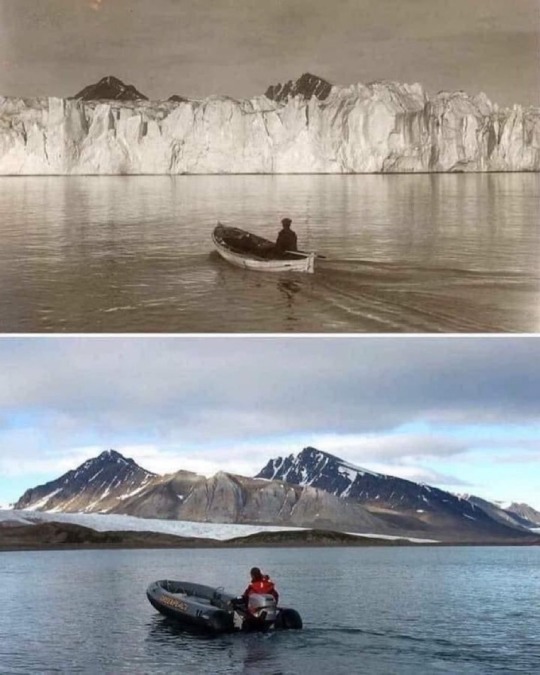
This is the same exact spot in the Arctic Ocean photographed 105 years ago vs what it looks like today. But sure, climate change is a hoax
958 notes
·
View notes